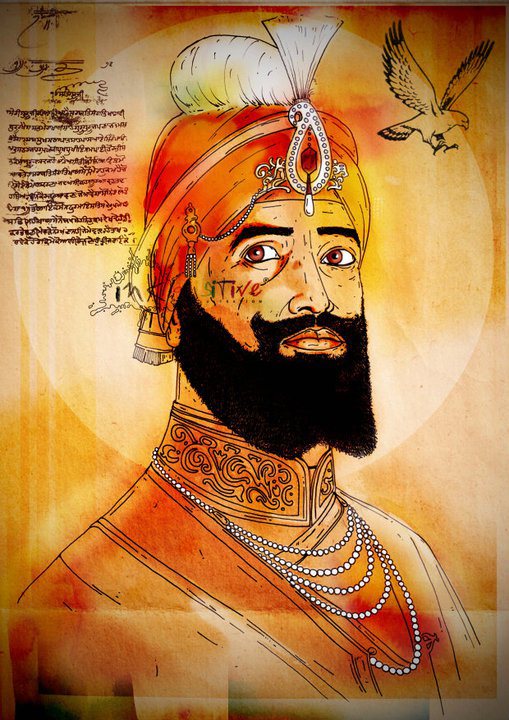
Gendercide is a well-known problem in India. The BBC and ABC 20/20 have highlighted this issue. The low sex-ratio in Punjab, India shows how the soil, which gave birth to Sikhi is not devoid of this problem. The land on which our Gurus proclaimed the equality of women when others considered her impure has now become the dumping ground for unwanted baby girls. Their pure bodies are thrown onto piles of garbage for dogs to nibble away. Dead fetuses are stuffed into water wells.
A seminal research study conducted by Monica Das Gupta on selective discrimination against female children in Punjab states that Punjabi Sikh women are highly educated and well-treated in Punjab compared to other states. The harsh reality is that a rise in “status” has not changed the value of women. Women can be loved and cared for, but still under valued. They can be highly educated and treated well, but families want one of these daughters not two. But two sons would be okay. The value of daughters and sons is displayed when couples develop family-building strategies. How many children to have? If we have one daughter or two, will we be content with another daughter? Should we have only one son? Studies show that common answers to these questions are strongly rooted in a distorted value system, which reinforces the secondary status of women and allows for structures to be created to perpetuate this inequity. Thus, value systems and structures produce a circular cycle of mutually reinforcing each other.
The Sikh Gurus gifted us a value system that does not permit this secondary status of women. However, many have chosen not to implement it in their lives. It has even seeped its way into how Sikhi is practiced. Women are not allowed to do all kinds of seva at the Harmandar Sahib and our granthis/ragis’ kathaa most often highlight how a Sikh woman went to the Guru to request only a son.
If Sikhi is a key element to any solution for gendercide within the Punjabi Sikh community, wouldn’t kathaa/sikhyaa in the Gurdwara be the most logical place to start? We do enter the house of our Guru to understand and reinforce our Sikh value system.
Co-blogged by Sundari and Ajaib Kaur
How many young Sikh women do you know who are looking to meet their Sardar? And how many young Sikh men do you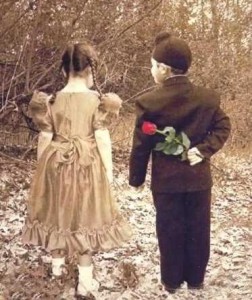 know who are looking to meet their Sardarni?
know who are looking to meet their Sardarni?
Lots? We hear you. But how can we make these two groups meet?
We decided to write a post on this topic for many different reasons. It’s clear that there is little space elsewhere to talk about how young Sikhs can meet each other, with the potential of pursuing something beyond a friendship.
Gasp! Are we actually admitting this? After a few dialogues with friends and families, we decided that we may as well start breaking the ice here on the West Coast. Over the last few years, SikhNet has been hosting “Gursikh Speed Meetings”, in cities such as New York, Boston, and Toronto. It is nice to see that the organizers has decided to bring this successful event to the West Coast, in our beloved City of Angels. These events give young, single Sikhs between the ages of 25-40 a chance to meet fellow single-and-ready-to-mingle like minded Sikhs in a communal safe space. This concept may feel familiar, because it is. The ‘speed meeting’ is a popular spin-off of an American cultured speed-dating event; having an even number of men and women participants, and rotating through getting a brief chance to connect with everyone in the room. It seems like a lot of work, but based on our feedback from some past participants, it is fairly enjoyable. The best part: if you do not click with someone mutually, you do not need to face them again. Contact information is only shared if both parties have expressed interest in each other. Fool proof for both ladies and gents!
My childhood was full of insecurity and self-doubt, the result of years of harassment, taunts, and jokes about the ball/rag/tomato/towel/etc. on my head as a turban-wearing child. My insecurities, however, began to shift (or expand) as puberty hit. Let’s call it facial hair anxiety.
At first, having a moustache grow in at a young age wasn’t necessarily a bad thing. After all, I passed as much older than I was, which was nice for a scrawny brown kid like me.
But soon enough, the complex around my dhari (beard) settled in, and no amount of time with a thatha tied tightly  around my head was ever enough to totally alleviate my beard insecurities.
around my head was ever enough to totally alleviate my beard insecurities.
Surrounded by peers for whom shaving was a rite of passage into manhood, it’s not surprising that I felt a little left out (though to be clear, the idea of a razor on my face never sounded so pleasant). Further, I was inundated with the voices of young women in my school casually referring to facial hair as gross or unattractive (with no intention to hurt my feelings I’m sure) and their preference for guys who were “clean-shaven.”
CLEAN-shaven. The implication being that facial hair is…dirty?
These are the messages we get from our peers and from the media every day. So naturally I assumed it was highly unlikely that any of my female classmates would ever be interested in dating someone like me. The combination of a dirty face plus a patka was enough to cause a whole lot of anxiety and insecurity for this angsty teenage Singh.
This Monday, Sikhs for Justice is organizing a rally at the United Nations Headquarters to call for UN intervention stop India’s planned execution of Professor Devenderpal Singh Bhullar. Professor Bhullar’s brother, Tejinder Singh Bhullar will be addressing the rally. In their appeal to Secretary General Ban Ki moon, Sikhs for Justice is calling upon the U.N. to intervene and free Professor Bhullar based on a UN General Assembly resolution adopted in 2008 known as Resolution 62/149 which called on all major states to abolish the death penalty. 62/149 is a nonbinding instrument to mark progress on the United Nation’s position that they death penalty undermines human dignity and acknowledges the serious claim that any failure of justice in the implementation of the death penalty is irreversible and irreplaceable.
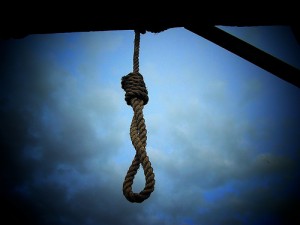 The death penalty too, runs contrary to Sikh historical positions on capital punishment. The Sarkar-e-Khalsa of Maharaja Ranjit Singh Ji, followed a no death penalty policy, as M. Gregor in his 1846 ‘History of the Sikhs’ writes. He notes that, ‘[Ranjit Singh] was the exception of Oriental monarchs, and never wantonly inflicted capital punishment and mutilation.’ Other authors describe, that ‘Humanity indeed, or rather a tenderness for life, was a trait in the character of Ranjit Singh. There is no instances of him having wantonly imbued his hands in blood.’ These sentiments that can be seen as consistent Sikh political philosophy captured by the Zafarnama and other documents. Specifically in the Zafarnama, Guru Gobind Singh Ji quotes the Persian poet Firdausi, writing, ‘How nicely the sweet tongued poet Firdausi has said, to act in haste is the work of the devil,’ referring to Aurungzeb’s executions of the youngest Sahibzadas Zorawar and Fateh Singh and Mata Gujri in Sirhind as the act of ‘Sheitan.’
The death penalty too, runs contrary to Sikh historical positions on capital punishment. The Sarkar-e-Khalsa of Maharaja Ranjit Singh Ji, followed a no death penalty policy, as M. Gregor in his 1846 ‘History of the Sikhs’ writes. He notes that, ‘[Ranjit Singh] was the exception of Oriental monarchs, and never wantonly inflicted capital punishment and mutilation.’ Other authors describe, that ‘Humanity indeed, or rather a tenderness for life, was a trait in the character of Ranjit Singh. There is no instances of him having wantonly imbued his hands in blood.’ These sentiments that can be seen as consistent Sikh political philosophy captured by the Zafarnama and other documents. Specifically in the Zafarnama, Guru Gobind Singh Ji quotes the Persian poet Firdausi, writing, ‘How nicely the sweet tongued poet Firdausi has said, to act in haste is the work of the devil,’ referring to Aurungzeb’s executions of the youngest Sahibzadas Zorawar and Fateh Singh and Mata Gujri in Sirhind as the act of ‘Sheitan.’
A Pakistani friend of mine from Lahore passed on a video about a 70 year old man named Mushtaq Ahmed from a Punjabi village near Gujranwala, who just complete his MPhil and will be starting his PhD soon in Education.
With five daughters and three sons, Mushtaq Ahmed completes all his necessary farm work, including working in the field and managing and livestock, while carrying his books with him. His plans are ambitious: to go to the university and teach, because for him, ‘Being a Muslim, we should get education from cradle to grave.’
Here’s the clip:

I couldn’t help think about how this applies to our community. My intention here is not to distinguish from people who are ‘parrd’ or ‘unparrd’ or the class implications this has in the Sikh community in Punjab and the Diaspora. (I’ve met many unparrd/’uneducated’ people who were far wiser than those who were parrd/‘educated’ in some of the most expensive universities in the Diaspora and in the watan. I don’t like those terms myself but just laying out what’s what.) From a Sikh point of view this type of distinction is quite counter productive and has nothing to do with living a life that is Guru-centered.
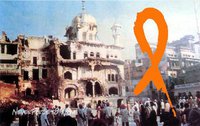
6/4 @ 2:15pm – More tweets by Panjabi MC, award-winning MC Amrit Tung, even hiphop artist B-Magic. Also pagh salute to our friends at Naujawani for keeping us up to date with their twitter feeds.
6/3 @ 4:45am – Since the post went up, Bhangra Star Jassi Sidhu, famed DJ Bobby Friction, Gurdarshan Mangat (Saintlion), and Raxstar. Keep the list growing!
So as they say, it starts with an idea. This one comes from Simrat Kaur from the Bay Area. Sometimes, it happens even on the BART.
It was an idea to increase awareness all over the world of the events that unfolded during Operation Blue Star in 1984. If people from the Middle East can use sites such as Twitter to start revolutions, then why not Sikhs? We need to stop using social networking sites for the purposes of hitting on girls and flirting with guys. We need to start a revolution. How long will Sikhs stay quiet? I am one hundred percent sure that if the same attack had been carried out on the holiest of places of any other religion, things would have definitely not ended this way.[link]
The challenge is simple and symbolic. We have not forgotten. Without justice, there can be no forgetting. So here is what we are asking. Use your twitter or start an account – but tweet the following #neverforget84 everyday and all day from Jun 3rd to the 6th. Here is the event page on Facebook. The goal is to get #neverforget84 to trend. Is it slacktivism, maybe….but can it have real ramifications, maybe…..
The Jakara Movement is participating so you can follow them too at @jakaramovement . At the time of this posting, even bhangra sensation Jassi Sidhu has tweeted #neverforget84 . With some encouragement, maybe even Jay Sean, Gurbaksh Chahal, and others will follow. Do your part! Tweet! and ask for favors from friends/family/people you are following!
Also for some general information about Sikhs and 1984 – follow this link.
Hope to see your tweet!
UPDATED 5/23/11: This post has garnered renewed attention after the recent murder of Balbir Dhami. The Sacramento police does not believe it is a hate-crime and do to the circumstances, most in the community do not believe so either. I won’t make speculations, but will leave it to the law enforcement officials to sort out the case.
Earlier this week, the Drug Enforcement Agency (DEA) sent their agents to capture an Elk Grove man.
Balbir Dhami 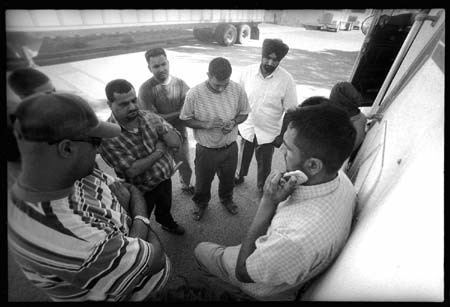 [click on the link to see the news video], the owner of Dhami Trucking Plaza on Stockton Blvd in Elk Grove, was arrested and is accused of being at the center of a drug running business, moving marijuana and cocaine, between Canada, Elk Grove, and Los Angeles.
[click on the link to see the news video], the owner of Dhami Trucking Plaza on Stockton Blvd in Elk Grove, was arrested and is accused of being at the center of a drug running business, moving marijuana and cocaine, between Canada, Elk Grove, and Los Angeles.
The news describes Dhami as a “prominent Elk Grove business man and leader in the Sikh community.” While I don’t know if he was a prominent business man or even a leader in the Sikh community, from internet searches, he does seem to have made political overtures as campaign finance records show that he donated to Democrat Dick Gephardt’s presidential campaign in early 2004.
His family has denied his involvement:
“I know my dad. What he’s being blamed for in the allegations it’s totally against our religion. It’s something he’s against and wouldn’t recommend anyone else to do something like that,” explains Aman Dhami [Balbir’s son]. [link]
While I cannot speak on Dhami’s specific case, I can speak about this being a common problem within the Punjabi Sikh community.
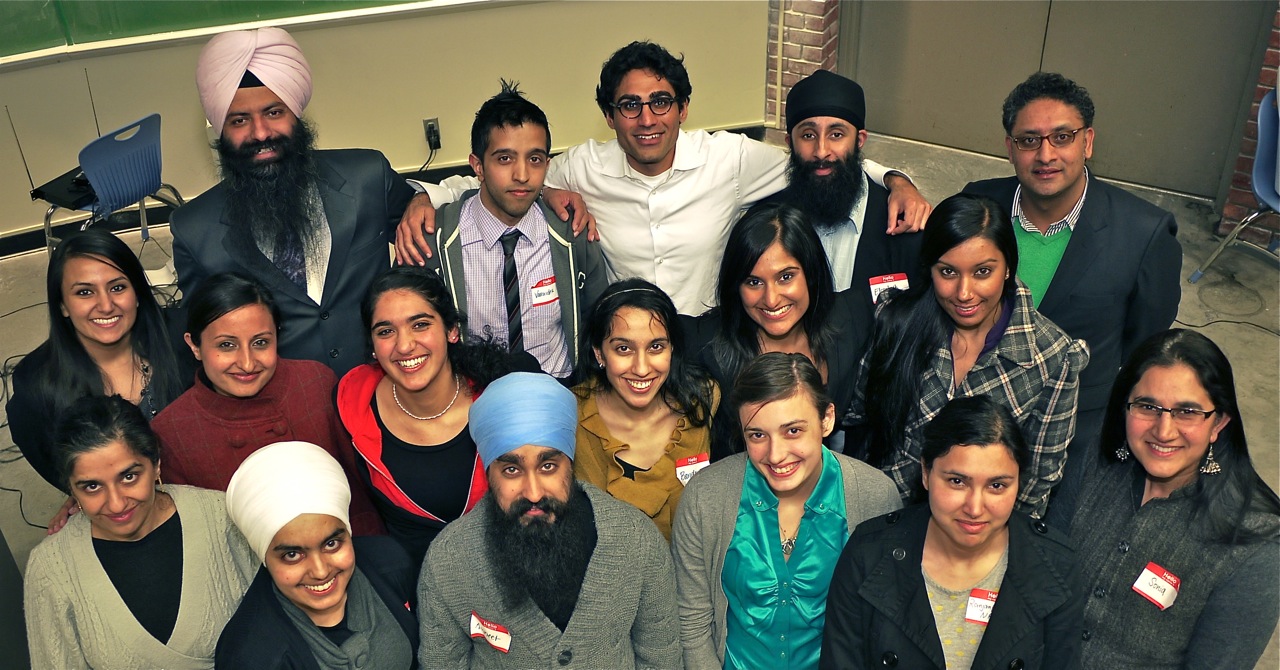
My apologies for a post that is far overdue. So Sikholars 2011 came and went. This year was an even greater success than last year with attendance of over 110+ and a growing number of presenters. This year’s Sikholars 2011 class – Kamal Arora, Amneet Singh Bali, Sonia Dhami, Amandeep Kaur Dhillon, Neelamjit Singh Dhillon, Sandeep Singh Dhillon, Roopan Kaur Gill, Gurbachan Singh Jandu, Tarnjit Kaur Johal, Varinder Singh Johal, Simran Kaur, Sujot Kaur, Tavleen Kaur, Semran Kaur Mann, Ranjanpreet Kaur Nagra, Neilinder Singh Ranu, Sharanjit Kaur Sandhra, and Elizabeth Weigler – was our best yet and we look forward to incoming Sikholars classes.
The event was made possible by the CSU East Bay Ethnic Studies Department, the Sabharwal Sikh and Punjabi Studies Chair, the CSU East Bay Sikh Students Association, the Jakara Movement, and the scores of volunteers.
Below the fold, as promised are uploaded copies of some of the papers (we did not receive permission from all the Sikholars to upload their papers due to ongoing research, publication in academic journals, etc.). These papers will be made available for one month as per our goal of greater democratization of research.
We look forward to Sikholars 2012
Like many Sikhs, I grew up eating meat. It was something I never really questioned until I was in college and started learning more about the treatment of animals on factory farms and the environmental impact of the meat industry.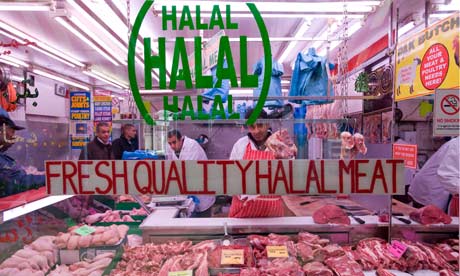
But growing up I never thought about where my spicy deep-fried chicken strips were coming from. Or the living (and dying) conditions of the cow that made up the thinly sliced pieces of meat in my Arby’s roast beef sandwich. As long is it wasn’t halal, it was all good.
I never understood what halal truly meant, but the message I got from my parents and others in the community went something like this: Halal is the way Muslims slaughter animals, and it involves killing the animal slowly and painfully. And lots of gushing blood. We Sikhs don’t believe in torturing animals, so we don’t eat halal meat. Sound like a familiar story line?
This, of course, contributed to my perception of Muslims as barbaric people who were dirty, had multiple wives and questionable morals, and killed my ancestors during partition. In the context of the messages I received from family and community growing up, the story about halal fit right in – yet another way Muslims are backwards.
As is abundantly clear in my writing on this blog, this is in stark contrast to how I see Islam and the Muslim community at this point in my life. But I grew up with these messages and stereotypes just like most of my Sikh peers did.
Really, what’s all the fuss about halal? Why aren’t Sikhs supposed to eat halal meat?
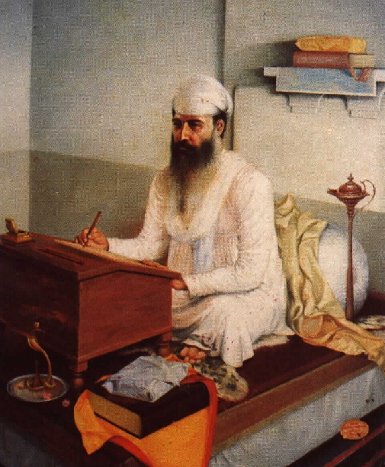 Guest blogged by Pataka
Guest blogged by Pataka
As a student interested in Sikhism, visiting the library can be a somewhat dismal affair. Searching for academic works on Sikhism leads to few results. Searching for specific topics within Sikhism – for example, gender and Sikhism, lead to even fewer results.
The elitist institutionalization of scholarly research has often excluded marginalized groups and voices: those whose native language is one other than English, members of the working class who cannot afford to pay tuition and fees, single parents, seniors, people living with disabilities, immigrants, refugees and so on. It’s no stretch to imagine that one of the reasons that there is such little research available on Sikhism is due to the fact that we are a marginalized community, both in India and in the diaspora.
While many ‘professional networking’ organisations targeting Sikhs exist, the elitist spin on these events exclude those who may not be ‘professionals’ – students, stay-at-home parents, the unemployed or retired. A push towards inclusive, collaborative open-access community events highlighting Sikh research can foster healthy debates, increase social interaction between different generations of Sikhs on topics of interest, and ensure that Sikh history and Sikh thought are included within the large canon of scholarly literature. Democratizing academic research can also facilitate collaborations between academics and Sikh community groups on issues of concern.
Yes, I am going to indulge in imposing what I believe our priorities are onto those of you reading this. Our priorities should be where the ground touches our feet and not the vast mansions seating established masands who rake in millions and output redundant declarations commemorating our great history year in and year out.
I’ve seen it happen all across the world. I’ve seen individuals and organizations scrambling to raise moneys for the poor widows in Delhi who need justice and security. I then went on to see that those widows still anguished within a glimmer of hope. Exploited, used and molested by westerners, that glimmer of hope will soon fade. Those widows will die, their children already disenfranchised from Sikhi and thrown into the wallows misery, poverty and drug addiction are turning to Christian missionaries for support. All the while, our masands erect massive, superfluous houses to promote Sikhi and create focal points for Sikhs to congregate. Because, that is what should attract Sikhs: massive Gurdwaras and not the love of our Gurus or our need to lay our heads on their laps.
Watching protests erupt all over the Middle East and North Africa gave me hope; if these seemingly apathetic peoples can rise against heavily oppressive systems of governance then we, too, can rise against this unjust use of finances and take our community back and direct it toward a path of Sarbhat da Bhalla.
These are some of the Gurdwaras in question:


A report from the BBC:
On a recent visit to Amritsar, one of the topics of interest was the newly approved plan by Chief Minister Badal for the revamping of the entrance to the Darbar Sahib. The plan includes a “state-of-art” restructuring of the entrance plaza.
According to one article, the new entrance would address accessibility for pedestrians and eco sustainability. It was also noted in this article that a timeline for completion and budget for this project has not been planned.
While the Panjab government is clearly looking to increase their tourism value, it was made clear to me that many Panjabis are not huge supporters of a project that will change the existing architecture around the Darbar Sahib. There is a strong sentiment that religious buildings should be treated as such, rather than as tourist spots.
The Darbar Sahib complex does rely on funds to ensure sustainability but with plans to enhance the Darbar Sahib with tourism in mind, the Panjab government will be treading a fine line to make sure that the holiest of places for Sikhs does not become impacted by visitors. Nevertheless, the Darbar Sahib is not the first place to be affected by increased tourism. Other “wonders” around the world are also working to address how to balance the sustainability of history with the growing inquisition of visitors.
What do you think? Should the Darbar Sahib be redesigned with tourism in mind or should efforts be made to keep the area intact as an important religious place?
Guest blogged by Navdeep Singh Dhillon
The reformist, humanitarian wife of Franklin D. Roosevelt (32nd President of the United States) – and “first lady of the world” – Eleanor Roosevelt once famously said, “Great minds discuss ideas, average minds discuss events, small minds discuss people.”
Over the past few years, I have become quite disheartened over the state of the discussion of 1984, based on conversations I’ve had with seemingly well-educated people and what I’ve seen in the media. The record seems to be stuck on “events” and has barely moved an inch into the arena of “ideas.”
A few months ago, an entire issue of India Abroad was devoted to 1984 and I was initially interested to read it. But after reading just a few paragraphs, I realized it was the same ole, same ole: a recap of the events by people who were narrating their experiences during 1984 and shortly thereafter. The experiences themselves were very vividly told, but the articles didn’t seem to have any real purpose, other than to keep the conversation within 1984.
It is obviously extremely important to know the facts, the history, the events that took place, the backdrop, and of course the people involved. But there should be a “now what?” aspect put into place that involves something more than mentioning the names of Jagdish Tytler and Sajjan Kumar, rehashing the timeline, the people involved, holding a few film screenings and handing out fliers. Shouldn’t there?
Guest blogged by Navdeep Singh Dhillon
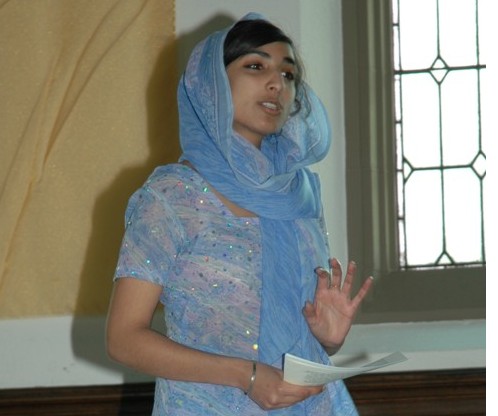 For my first post as a guest blogger, I wanted to address an issue that has been irritating me since September, when I first read about it. [An anonymous] Mehmaan wrote a post titled “Valarie Kaur, the peddler of self-promotion.” Mehmaan’s claim is essentially that Valarie Kaur is a big pakhandi.
For my first post as a guest blogger, I wanted to address an issue that has been irritating me since September, when I first read about it. [An anonymous] Mehmaan wrote a post titled “Valarie Kaur, the peddler of self-promotion.” Mehmaan’s claim is essentially that Valarie Kaur is a big pakhandi.
Mehmaan’s singular criterion for reaching the conclusion that Valarie Kaur is not just a pakhandi, but a big pakhandi, is that she is using social media and her website to promote herself as a speaker and to sell her documentary, “Divided We Fall,” inaccurately called a “movie” in the post.
I have never met Valarie and don’t know her family, but do want to clarify Valarie Kaur’s achievement, relegated to the realm of frivolity with the express purpose of making money, by Mehmaan in order to prove a point.
On September 11, the mood against anyone brown, especially Sikhs, changed drastically, and it culminated with the murder of Balbir Singh Sodhi on September 15. At that time, there was no Twitter. There was no Facebook. Even text messaging wasn’t normal everyday behavior. So there was no immediacy with information. I remember receiving emails through newsgroups I happened to be a part of documenting the steadily rising violence and blatant racism towards brown people. And then switching on my television to see zero updates on the “backlash.” Instead, it was just the same devastating image of planes crashing into the Twin Towers, followed by a turbaned and bearded Bin Laden. So what Valarie Kaur did at 20-years-old is nothing short of phenomenal. Along with her cousin, she went to document the brown experience on a cross-country trip, armed with plenty of panache, zero technical skills and a video camera. The fact is that there is no other documentary, which I am aware of, that weaves such a powerful narrative, intermingling a compelling personal story, and creating the link between not only Sikhs, but anyone of color, including the Japanese-American survivors of camps in the United States.
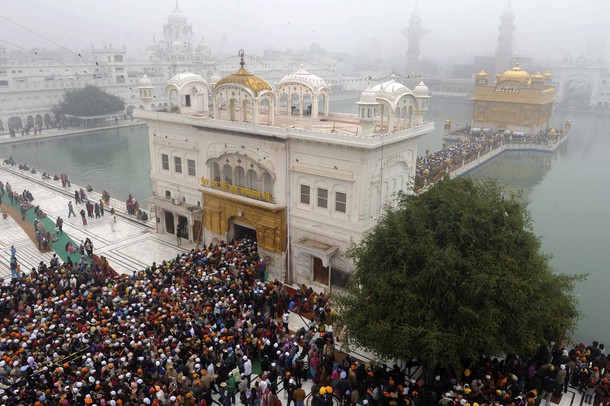
New Years Day at the Darbar Sahib
From all of us here at The Langar Hall, we’d like to wish all our readers a very happy new year! As you may have noticed, our posts have been intermittent lately. This is a result of committment changes and transitions occuring in the lives of many of our bloggers. As is the case in all communities, change is inevitable, and TLH is no exception.
While the basic premise of this site will remain the same (see more here), 2011 is bringing us some fresh new voices and exciting changes. You can expect to see more posts by a number of guest bloggers (Mehmaan) and by February several new permanent bloggers. We are excited about the new writers who will be contributing to TLH this year, and we continue to encourage readers who are interested in participating in this process to send a note to admin[at]thelangarhall[dot]com.
Also, as previously mentioned, we hope TLH can be a place where Sikhs all over North America (and hopefully even beyond!) can find out about Sikhi related events happening in their areas. We are still working out the technology to make this happen, but we hope to get an events calendar up and running early this year.
Let the conversations begin,
Fateh!
Last week I attended a diwan of about 50 people on a Thursday night on the east side of Manhattan, in New York City. The Manhattan Sikh Association (MSA) has been organizing monthly diwans in NYC for years now in apartment buildings and other temporary locations, but recently the group opened up a permanent space on East 30th street and Park avenue in Manhattan, making it the island of 2 million inhabitants’ first gurdwara.
I’ve always enjoyed attending the intimate MSA diwans, which tend to attract a lot of young Sikh professionals who live or work in Manhattan and the surrounding areas. Even the New York Times was intrigued by MSA and did a story on them last year. As I sat in their new space last Thursday, I felt calm and at peace, no one was yelling at me about the latest gurdwara politics**, and my peers, many of whom were second generation Americans like myself, were the ones doing kirtan, leading Rehras Sahib and Ardas, and in short, running the show. One young Sikh did a brief and conversational viakhia (commentary) in English of his shabad before he started singing. I thought to myself, this is a spiritual space.
Sadly, a spiritual space for sangat to come together, reflect and grow is a far stretch from what most gurdwaras I’ve attended in North America feel like.
Guest blogged by Ajaib Kaur
I saw this video recently on a photography project inspired by Rana Singh Sodhi and the loss of his brother after 9/11 to a bias-motivated crime, or ‘ hate crime’. The project aims to capture photographs of one child from every country in the world, residing right here in New York.
I was inspired to do this project in 2003, when I was driving across the United States and I stopped at a gas station in Mesa, Arizona and I met this gentleman named Rana. A couple days after 9/11 Rana’s brother was planting a tree in front of a family owned gas station, and someone drove by, saw a Sikh who was like Rana wearing a turbanand a beard and shot him.
He further reflects on the characteristics of the children he captures:
What I was capturing was not the ethnicity of the child or the fact that they were a New Yorker, but a very specific emotion about that person, so that it represents a spectrum of emotion that we all know.
The piece is an interesting take on combating bias in one of the most ethnically diverse cities in the world. Since the U.S. Census has found that the next generation of Americans will be considerably more diverse than the previous generations with more immigrant communities making their way out to ethnic enclaves in the suburbs [link], and since the ethnic makeup is in constant flux across spaces and neighborhoods [link], projects on how mixed communities can relate to each other in these spaces are needed.
The project is also an example of how Sikhs can engage in new media and platforms where Sikh representation is in dialogue with other ethnic and religious communities, rather than in isolation.
Thank you Danny Goldfield, for your contribution.
For those of you who are following the Sikh hip-hop scene, Navdeep Singh Dhillon’s blog has a good overview of each of the musicians who’ll be in attendance at the upcoming Lahir 2010: Move the Movement event in New Jersey. Here’s an excerpt about one of the rappers whose name means Rebel,
Baagi Gunjiv is one of the very few rappers out there who raps in Punjabi. The only other one that I can think of is Bohemia, and his songs are all about “thug life” in Oakland and Sacramento. Not that there’s anything wrong with that =) So just the fact that he is rapping in Punjabi and rapping about social issues like farmer suicides, droughts, and 1984, is hopeful, but he doesn’t really have very many songs out there to draw a conclusion from. The only other one I have heard, “Baagi di Vaari” was produced by Sikh Knowledge so it sounds very professional, but content-wise, it is a bit vapid. In his defense, the chorus “Bubbe noon kanna, te Gugge noon bihari” which details the two punctuation marks required to write his name in Gurmukhi, falls in line with any other debut rapper. “What’s my name? Snoop Doggy Dog.” “I’m Bushwick Bill, but you can call me Richard.” “Vanilla Ice Ice Baby,” “Hi, my name is. Slim Shady.”
So I am looking to forward to seeing what else he comes up with and remain optimistic that he will be the breath of fresh air for Punjabi music, both in Punjab and overseas so we can move more towards heightening the consciousness of the masses rather than songs like Diljit’s deep lyrics: “Chandigarh vich kudi milli, chocolate vargi” which I can’t even bring myself to translate. [link]

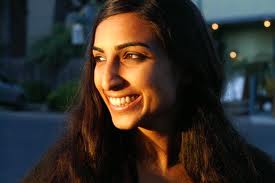
I write this as it is the truth as I see it. Not out of spite or rancor, but out of a desire to caution others and promote the path of critical self-reflection. I write about peddlers of self-promotion.
The topic is hardly new. In fact, Jodha beat me to the punch years ago, but here is my own contribution to the list.
Valarie Kaur. We have all seen her movie…..at least a half a dozen times (coming again and again and again and again to a Sikh event near you). We have all heard her speak….my head still reels from the vacuousness. We have read her writings….still hoping for a point beyond her ceaseless self-promotion. We have all heard her heart-wrenching, tormented, and soul-searching story as she climbed out of the pits of hell, all for being named…Valarie (shudder!).
